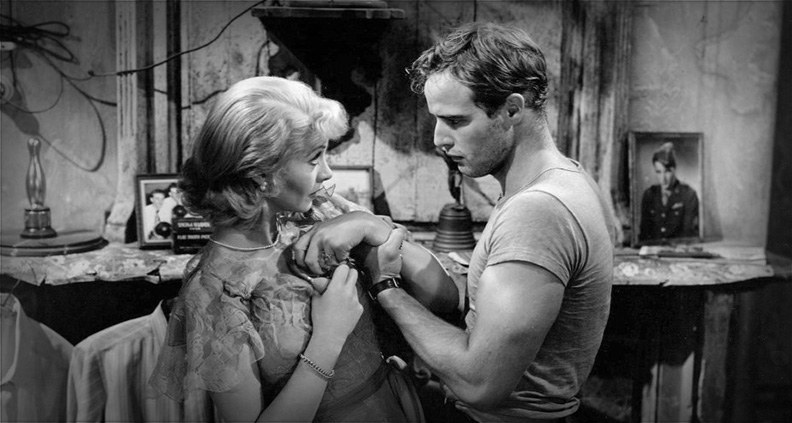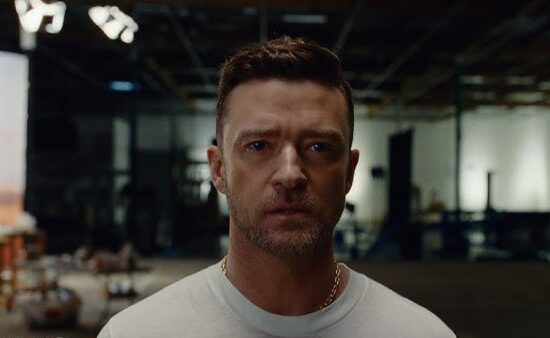
To celebrate our Board Member matching campaign–which, your donation (and impact!) will be doubled through our Board Members and Friends Matching Challenge, available through this Thursday, September 29–we’re reposting our retrospective series The Fi Hall Of Fame featuring refreshed, expanded and updated versions of most popular blogs of all time. Special thanks to the original author of this piece, Olajide Paris.
Regardless of its importance to the storytelling process, film music is too often an afterthought. There are a variety of theories that composers have as to why, and they’re mostly related to a lack of education. So I’ve decided to take an active stance in educating filmmakers about the role of music in film and the process of how a film score comes into being.
My hope is that by the end of this piece you’ll be more familiar with: A) the history of film music in general, and B) the key composers who have contributed to the development of film music as an art. So—where did this all start?
THE SILENT ERA (1890s-1929)

During the silent era, films music is provided by each individual theater, either by phonograph or as performed live by flesh-and-blood musicians. In the later case, either a pianist improvises to the film or a small ensemble of musicians performs a classical piece, in the background, as the film plays. But! Once the ability to synchronize music and sound to celluloid becomes possible in 1929, music quickly becomes an integral aspect of the storytelling process. Suddenly, composers are commissioned by Hollywood to write new material especially for the movies. A new profession is born.
THE GOLDEN AGE (1930-1950s)

This is a unique period in the history of film scoring. Exploding with creativity, music written for the movies consistently matches the artistry of the films themselves. Composers during this period primarily come from backgrounds in concert music, and almost exclusively write orchestral pieces. Here are a few highly influential composers from the time:
Max Steiner. Regarded as “The Father of Film Music” Steiner makes extensive use of leitmotif in his 1933 score for King Kong. Created by German operatic composer Richard Wagner, leitmotif is a technique wherein specific instruments or musical themes are assigned to individual characters or events. In subsequent decades, the use of the leitmotif has become ubiquitous in film music.
Enrich Korngold. An Austrian-born composer, Korngold’s many credits include The Adventures of Robin Hood (1938) and The Sea Hawk (1940)—which will greatly influence John Williams’ work on Star Wars in 1977.
Alfred Newman. Newman composes over 250 films, including Mask of Zorro (1940), and serves as the director of music at RKO studios. He’s the father of composers Thomas Newman (American Beauty), David Newman (Ice Age) and the uncle of singer-songwriter Randy Newman (Toy Story).
Bernard Hermann. Hermann is best known for his longtime collaboration with Alfred Hitchcock, especially his iconic work on Psycho (1960). In later years, Hermann will work with New Hollywood directors such as Martin Scorsese (Taxi Driver) and Brian De Palma (Sisters).
FILM MUSIC BRANCHES OUT (1950s)

1951. A Streetcar Named Desire features a hybrid symphonic-jazz score by composer Alex North. This is a major step forward for film music, moving Hollywood film scoring away from its prior, exclusively European sound.
1952. High Noon features the song “Oh My Darling,” which proves instrumental in the commercial promotion of the film. Following the success of “Oh My Darling” studios begin asking composers to write original songs for their films, both for promotional purposes via radio play and—later on—for ancillary revenue in the form of soundtrack albums.
1954. The studio system begins to dissolve. Composers transition from being employed by the studio to being freelance creatives. But unlike other conductors and instrumentalists, film composers do not belong to the American Federation of Musicians—a fact that will have long-term consequences.
1958. Miles Davis’ contribution to the French noir film Elevator to the Gallows is notable for a few reasons. “Gallows” is a jazz score in its purest form, having been scored with a trio of musicians improvising to the screen. Whether or not you’ve seen the film you very likely associate jazz or the trumpet with film noir, and this film is a big reason why. Lastly, Miles Davis’s work on Gallows makes him one of the earliest African-American film composers, paving the way for later artists like Quincy Jones, Herbie Hancock and Terence Blanchard to follow in his footsteps.
POP, JAZZ AND WESTERNS (1960s)

Elmer Bernstein’s score for The Magnificent Seven (1960) and Ennio Morricone’s work on Sergio Leone’s Dollars Trilogy (1964-966) are among several new, now-classic Western scores.
Jazz composers Henry Mancini and Lalo Schifrin—best known, respectively, for The Pink Panther film series (1963 onward) and CBS’s Mission Impossible (1966-1973)—do their part to keep jazz relevant in film and TV. British composer John Barry almost single-handedly defines the sound of spy films with his symphonic-jazz hybrid scoring of the popular James Bond film franchise. Elsewhere:
1962. Maurice Jarre’s lush score for Lawrence of Arabia creates the template for all future desert soundtracks, fusing of exotic Middle Eastern scales with sweeping string melodies. While there are many examples of Jarre’s influence on later films, one of the best examples is Jerry Goldsmith’s score for 1999’s The Mummy.
1967. The soundtrack to Mike Nichols’ The Graduate is created almost entirely by licensing songs that had nothing to do with the film itself. The film’s only original song—Simon & Garfunkel’s “Mrs. Robinson”—is a number one hit. This practice continues to influence Hollywood’s approach to film music for decades. The ancillary income opportunity of soundtrack sales in combination with the fact that it’s cheaper (at the time) to score a film with songs (which by 2017 will no longer be the case) makes this method a highly attractive strategy for studios.
1968. Alex North’s score for Stanley Kubrick’s 2001: A Space Odyssey is replaced by the director’s temp track, comprised of classical pieces like Strauss’s “Also Sprach Zarathustra.” The soundtrack album is a huge commercial success and is also one of the earliest examples of what composers will refer to as “Temp Love”—the phenomena of a director falling in love with the temporary soundtrack to which their film is edited, thereby making anything the composer might write unpalatable, regardless of how well it may serve the film.
SYNTHS AND JOHN WILLIAMS (1970s)

In the 1970s New Hollywood era, film music heads in two concurrent, divergent directions with the incorporation of synthesizers and a return to classic scoring.
1973. Director/composer John Carpenter’s synthesizer score for Dark Star expands the soundtrack world beyond symphonic, jazz and pop music, introducing a brand new vocabulary of computerized arpeggios and other technology. This is a major paradigm shift in how scores are made, with long-term industry consequences. Up to this point, soundtracks required an ensemble of instrumentalists to perform the music. And whereas orchestras often consist of dozens of musicians, a single individual can program and entire synth score.
1977. John Williams single-handedly revives the sound of golden age Hollywood with his score for Star Wars. The film’s soundtrack becomes one of the highest-selling non-pop records of all time.
MORE SYNTHS, MORE FUN (1980s)

The 1980s are full of song-laden soundtracks, like the ones for Flashdance (1983) and Footloose (1984). Elsewhere, orchestral scores play second fiddle, so to speak, to the original songs featured like Ghostbusters (Ray Parker Jr.) and Back to the Future (Huey Lewis).
John Williams continues the Golden Age tradition with the iconic scores for E.T. (1982), Superman (1978) and the Indiana Jones series (1981-1989).
Due to quantum leaps forward in digital technology—especially sampling and computer-based sequencing—the 1980s also sees the proliferation of synthesizer-heavy scores. Notably: Escape from New York (John Carpenter, 1981), The Terminator (Brad Fiedel, 1984), Blade Runner (Vangelis, 1982) and Tron (1982, Wendy Carlos.)
Jerry Goldsmith’s work on he Star Trek film series (1979 onward) explores the possibilities of fusing orchestral sounds with electronic elements. Meanwhile:
1985. Former Oingo Boingo frontman Danny Elfman begins his decades-long collaboration with director Tim Burton on Pee Wee’s Big Adventure and, later, Batman (1989).
1989. Hans Zimmer makes his mark on the sound of Hollywood films with his score for Ridley Scott’s Black Rain, which soon becomes a popular temp track for action cinema. Zimmer continues to be influential, thanks to his extensive and innovative use of technology and hyper-collaborative approach to music production.
THE KITCHEN SINK (1990s-NOW)

As film scoring has grown into its own distinct art form, movies have continued to incorporate almost every genre of music imaginable. While symphonic scores remain popular, there are plenty of projects that eschew orchestral music altogether. The proliferation of synthesizers in the 1980s, and later digital audio workstations and virtual instruments in the 1990s and 2000s, has lowered the barrier to entry for aspiring film composers.
Musicians from non-symphonic backgrounds continue to successfully make their mark in the film industry—including rock stars (or former rock stars) like Nine Inch Nails’ Trent Reznor, Cliff Martinez (onetime drummer for the Red Hot Chili Peppers) and Radiohead’s Jonny Greenwood. Plus, there are more active female composers working in the industry than ever, including Wendy Melvoin and Lisa Coleman, Mica Levy, Miriam Cutler and Rachel Portman, among others.
But as diverse as scoring is today; it’s ultimately up to the director to decide how music should best serve the film. But the ability to make informed decisions about music should come from strong points of reference and study.
Film Independent promotes unique independent voices by helping filmmakers create and advance new work. To become a Member of Film Independent, just click here. To support us with a donation, click here. Your donation–and impact–will be doubled through our Board Members and Friends Matching Challenge, available through September 29.
Keep up with Film Independent…
(Header: John Williams scoring The Raiders of the Lost Ark)














